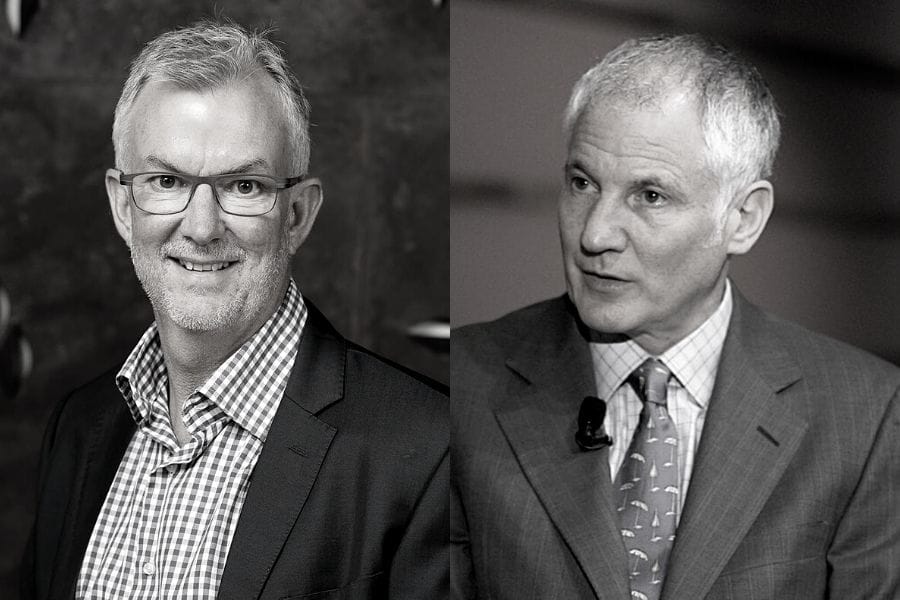Asset owners looking for a heroic challenge need look no further than managing climate risk and playing a meaningful part in the net-zero energy transition.
There are three difficult beliefs in play on this. The first is accepting the strong scientific evidence pointing to potentially catastrophic risks and impacts if climate change continues on its current trajectory and that, without substantial collective action, society risks irreversibly damaging the natural and financial systems that sustain us. It’s hard to overstate the seriousness of this situation.
The second belief is that the nature of these risks is fundamentally different from the risks we have traditionally focused on in the investment world, in that they are systemic, undiversifiable, highly uncertain and impossible to hedge. These uniquely difficult risks make collective action vital and necessary through the nation-state commitments that are required to cascade down to all institutions to implement a just transition to a net-zero economy.
In a world looking for stronger leadership and for an investment industry striving for greater purpose, the net-zero framework is an appropriately purposeful and substantive change. Those asset owners that have made, or will be making, net-zero commitments are probably doing the right thing but there should be respect for every fund’s unique circumstances to reflect on this differently.
The third belief involves asset owners adding a net-zero-trajectory objective to run alongside and complement the central financial objective of maximising risk-adjusted returns on investments. The belief is premised on financial outcomes from net-zero investing being better in the long term, precisely because of the climate outcomes. While managing them together is a powerful proposition, it does imply a big modification of the current investment model. Not least because aligning two objectives at the same time can involve compromises or concessions. Here doing the right thing does not always make it possible to do things right.
For example, imagine in 2025 that net-zero-pathway companies make up only half the market. Does an asset owner pick from that half while recognising the material investment constraint and knowing also that the net-zero tailwind may now be a headwind. In other words, that these assets may be priced at a premium offering reduced forward-looking returns relative to others. So, doing the right thing may now mean struggling to do things right when trying to deliver both the highest risk-adjusted returns and alignment to net zero.
Challenges
It should be very clear that there are a number of large challenges confronting asset owners when implementing net-zero policies including these additional tasks adding to the already stretched asset owner governance budgets:
- Identify and execute appropriate net-zero investment policies
- Measure and report on the carbon journey through a plan
- Maintain strong governance with robust continuity
- Align with all regulatory requirements on climate
- Manage the reputational risks arising from the public scrutiny of net-zero journeys.
But we should also recognise that there are investment and reputational risks from not committing to net zero.
The net-zero deliberations must weigh many uncertainties and complexities that make current decisions extremely hard to reach. In normal circumstances, the decision might more reasonably be taken when certain facts (investment, legal, political and science) have become clearer, but the current political agenda is pressing for an immediate decision.
There may be a silver lining to this cloud in that the trickle of early net-zero movers will trigger market interventions that may create disproportionate benefits. As the trickle turns into a cascade, more asset owners will move faster down de-carbonisation pathways and their actions will reduce the worry of failing unconventionally in isolation. This solidarity, across asset owners, in which shared interests and mutual dependence develop is the collective action we need and a case of the ends justifying means.
Road map
Having understood the challenges associated with a net-zero pledge and given serious thought to the beliefs and analysis required, a road map is necessary.
Starting with the objectives, asset owners will need to settle exact and multiple goals that are clearly drafted alongside the beliefs that support why they were chosen and how they will align with stakeholder expectations and fiduciary duty.
Then there is the carbon journey plan. There are the short-, medium- and long-term segments, in which the different sources of decarbonisation add up to the required trajectory.
Then there is the strategy. The chosen climate strategies should be categorised and described – both allocation and engagement; both decarbonisation and climate solutions. And the collaborations and delegations in the road map should be outlined with the necessary resourcing.
One point of emphasis is that the increased public disclosures of such investment plans and policies make much wider scrutiny inevitable. This reinforces the need for particularly clear beliefs and principles given that the justification of investment policies by reference to past performance in climate risk scenarios is not possible.
This road map must allow for much to change and so needs to be adaptive; which is easier done when constructed with maximum transparency, authenticity and competency. This is a big test of technical proficiency and cultural mettle.
We note how large funds play a special part in the net-zero transition under universal ownership* principles. Their capacity to play a proportionately larger part in addressing climate change comes from applying their weight alongside others in alliances that recognise their dependency on market beta combined with the leverage of collective action to build better beta.
These asset owners can currently enter net-zero commitments with solid financial arguments and use a supporting tailwind; but they no doubt will have to deal with tougher battles at various moments in the future. Under current fiduciary duty any concessions must fall on the climate ambition, not the risk-adjusted return but there may be a window of opportunity for them to lead change on this emphasis.
Fiduciary duty
This brings me to a personal view that fiduciary duty should be adjusted to provide better guardrails within which asset owners can operate. It seems that fiduciary duty, with its current high bar in financial primacy and poor air-cover for trustees, is fast becoming an anachronism in a world now focused on sustainability and wider responsibility.
Fiduciary duty varies by jurisdiction but using the UK’s fairly typical pension system as an example, there appears to be a fundamental disconnect between the government’s legal net-zero obligations and asset owners’ ability to help fulfil these. In order to be fit-for-purpose fiduciary duty probably requires a statutory override that accommodates net-zero commitments. This form of guardrail could help asset owners avoid the prisoners’ dilemma, of acting singly and selfishly, and instead act collectively and with solidarity as a better path for all.
It seems that only through collective action, and doing what we can with what we’ve got, that the investment industry can step up and avoid potentially irreversible damage occurring to our most important systems. Regulators will have a say in how influential asset owners become but whatever comes asset owners will play a substantial part. Out of great power comes great responsibility.
Roger Urwin is co-founder of the Thinking Ahead Institute
*Universal ownership combines the large-fund mindset of seeing themselves as long-term owners of a slice of everything – the world economy and market and its implied dependency on the market beta; with the large-fund strategy of leveraging collective action to build better beta to address systemic risk through active ownership, systemic engagement and allocations to more sustainable betas. ‘For universal owners, overall economic performance will influence the future value of their portfolios more than the performance of individual companies or sectors’. (Urwin | Universal Owners | Rotman Journal of Pensions Management 2011)




